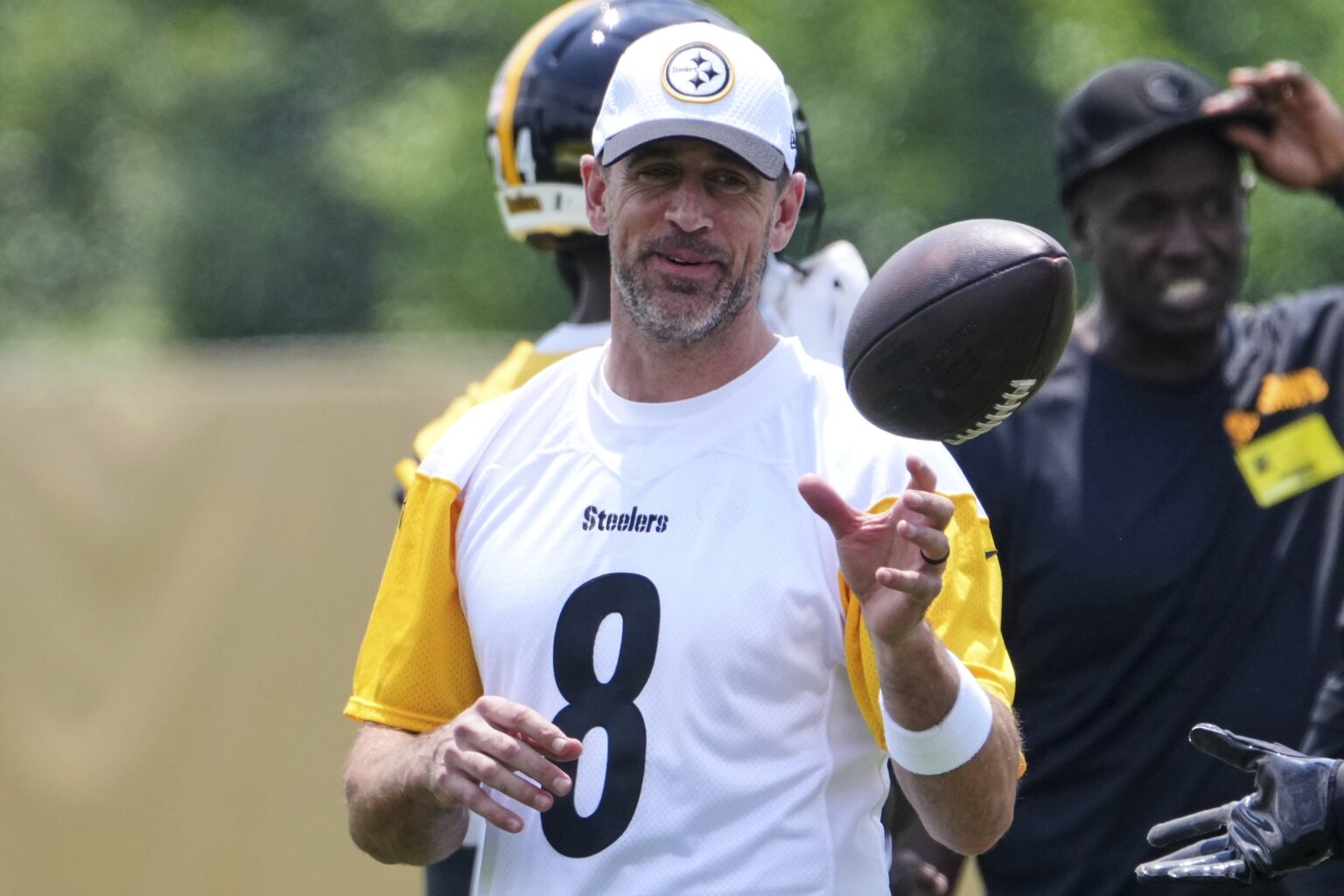Can Aaron Rodgers Revitalize the Pittsburgh Steelers’ Quarterback Situation?
As the Pittsburgh Steelers prepare for the 2025 NFL season, all eyes are on the potential impact of Aaron Rodgers, a seasoned quarterback with a storied career, now joining a team historically known for stability but lacking elite quarterback play since Ben Roethlisberger’s retirement three years ago. At 41 years old, Rodgers’s arrival raises the question: can he be the catalyst that propels Pittsburgh back into playoff contention?
Assessing Rodgers’s Recent Performance and Physical Condition
Rodgers’s transition to the Jets was marred by injuries and inconsistent play, leading to doubts about his current form. His 2024 campaign, in particular, was underwhelming, with notable struggles despite having talented receivers like Garrett Wilson and Davante Adams at his disposal. His final year in Green Bay, 2022, marked the beginning of a decline, with ESPN ranking him 26th in total quarterback rating and recording his lowest passer rating to that point. Last season, Rodgers finished 25th in QBR, with completion rates that fell short of expectations based on the difficulty of his throws, according to NFL NextGen stats.
It’s important to recognize that quarterback performance naturally diminishes with age, especially after 35. Extensive research from Pro Football Focus and academic studies on NFL performance metrics indicate a gradual decline starting around age 31, with a sharper drop after 37. Only a handful of quarterbacks, such as Tom Brady and Drew Brees, have sustained elite or even average performance into their 40s. Given Rodgers’s upcoming 42nd birthday in December, projections for his 2025 season should be tempered with caution.
Current Steelers’ Quarterback Depth Chart and the Need for Leadership
Heading into 2025, Pittsburgh’s quarterback roster is among the league’s weakest. Mason Rudolph, signed to a two-year deal, posted a modest 80.1 passer rating and a 55.5 QBR in eight games last season. Behind him, veteran Skylar Thompson, with only three NFL starts, and rookie Will Howard, a sixth-round pick with promising minicamp reports, round out the depth chart. Rodgers’s arrival would instantly make him the most accomplished quarterback on the roster, bringing a wealth of experience, including four MVP awards and a Super Bowl victory.
His quick release-averaging 2.69 seconds last season, ranking sixth fastest in the NFL-aligns well with Pittsburgh’s developing offensive line, potentially allowing him to operate effectively despite age-related mobility concerns. Moreover, the Steelers have reportedly tailored their offensive approach to leverage Rodgers’s strengths, signaling a strategic shift to maximize his impact.
Evaluating the Offensive Supporting Cast and Tactical Adjustments
While the Steelers have invested in a revamped receiving corps, there are reasons for cautious optimism. Wide receiver DK Metcalf, acquired in a trade during the offseason, posted 66 receptions for 992 yards and five touchdowns in 2024. However, his route running has been criticized for inconsistency, with some analysts ranking him near the bottom among NFL receivers in route precision. Rodgers has previously voiced frustrations with receiver route execution, which could pose challenges in their chemistry.
Beyond Metcalf, the depth at wide receiver is limited. Calvin Austin III is the second-highest-rated receiver on the team, according to Pro Football Focus, and tight end Pat Freiermuth remains a reliable target, having caught 65 passes for 653 yards and seven touchdowns last season. The offensive scheme, under coordinator Arthur Smith, emphasizes a conservative, run-heavy approach with play-action passing and two-tight-end formations, aligning with Rodgers’s strengths in ball security and play-action efficiency.
Strategic Fit and Play-Calling Philosophy
Rodgers’s history of excelling in play-action scenarios-ranking among the top in the league in passer ratings during such plays-could be a significant asset for the Steelers. Despite a dip in 2024, he still maintained a top-tier performance in this area. Conversely, his usage of deep passes has decreased, with only about 11% of his throws traveling 20 or more yards, a notable shift from previous seasons. This change reflects a more conservative, high-percentage passing style that could complement Pittsburgh’s run-focused offense.
Coach Mike Tomlin and offensive coordinator Arthur Smith have emphasized adaptability, noting that offensive schemes evolve based on personnel. Smith’s approach involves tailoring the game plan to maximize the strengths of his players, which could mean a more balanced attack that leverages Rodgers’s experience and decision-making skills.
Projected Performance and Expectations for 2025
Using advanced statistical modeling based on historical quarterback data, a realistic projection for Rodgers’s 2025 season suggests approximately 3,795 passing yards, 28 touchdowns, and 10 interceptions-assuming he remains healthy and plays a full season. These figures reflect a solid, if not spectacular, contribution that could stabilize the Steelers’ offense and provide leadership in critical moments. Naturally, factors such as injuries, team chemistry, and further age-related decline could influence these outcomes.
Final Thoughts: A High-Stakes Gamble or a Necessary Investment?
Steelers head coach Mike Tomlin expressed cautious optimism about Rodgers’s arrival, emphasizing a focus on effort and adaptability rather than bold predictions. The decision to bring in a veteran of Rodgers’s caliber signifies a clear intent to contend immediately, but it also involves inherent risks given his age and recent performance trajectory. Ultimately, Rodgers’s success in Pittsburgh will depend on his health, the offensive scheme’s effectiveness, and the development of the supporting cast. If he can recapture even a fraction of his former MVP form, the Steelers could find themselves back in playoff contention sooner than expected.

